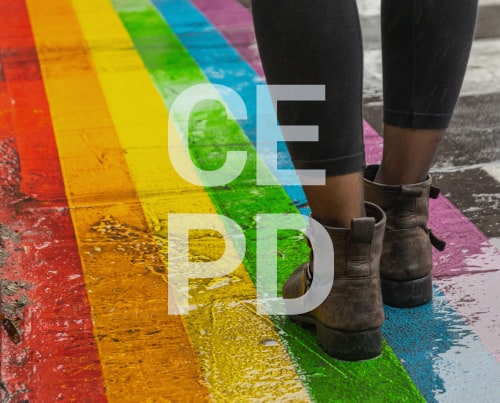Blog Post Heading
Blog Post Content
By Andrew Morin
Editor, MindEdge Learning
As we move through Pride Month, we see many companies and organizations championing the Pride spirit with rainbow products, logos, and social media posts.
But, while recognition of Pride is a good start, many organizations are still falling short of the bigger message of Pride: actively promoting acceptance, inclusion, and equality.
Why? Many organizations fall short because these tenets of Pride are not embedded in their organizational culture. Everything an organization does, and every message it sends the outside world, is a reflection of its culture. If an organization’s culture does not embrace the principles of Pride year-round—if, for example, it doesn’t hire LGBTQ+ individuals or speak out against discriminatory legislation—then its rainbow logo change for the month of June will ring hollow, and come across as little more than a cash-grab.
The organization may insist that its support for Pride is sincere. But look at what it does—not what it says—and you can tell for sure if it’s sincere or not.
Does the organization hire LGBTQ+ individuals? Does it have LGBTQ+ individuals in upper management? Does it promote initiatives to promote inclusion, diversity, acceptance, and equality? Does the organization only superficially support Pride because everyone else seems to be doing it? Is its work environment a safe space?
In short, does the organization truly value inclusion, equality, and acceptance? The only way to ensure an organization values these tenets is to make sure they are a part of the organizational culture.
Organizational culture starts at the top and makes its way down through every layer of the organization. Everyone who works for the organization, along with everyone who does business with it, will know whether diversity, inclusion, acceptance, and equality are concepts that are taken seriously at all levels.
Employees will be the first to know if the organization itself is designed to be diverse and inclusive. A top-down approach facilitates and attracts diverse recruits, propagates inclusive behavior in the workplace, and shows everyone outside the organization that the organization both talks the talk and walks the walk.
If the organization’s leaders feel they are not representing the diverse and inclusive values they want the organization to promote, it is always possible to redesign the culture. The most thorough and effective way to do this is through a process of intentional design.
What Is Intentional Design?
Intentional design is precisely what it sounds like: a design process that has both intention and purpose. If the purpose is to make the organization more diverse, inclusive, and accepting, then that must be the primary intention, and all processes should circle back to achieving that goal.
There are two ways for intentionally designing a new organizational culture, and both should be actively considered. The first is to learn from other organizations—those that are in the same field, as well as healthy organizations in general. The second is more direct: ask your own employees.
Researching the standards and practices of other organizations can be very helpful when developing a new organizational culture. But nothing is more effective and transformative for employees than asking them directly what they think the culture should be. Incorporating employees in the intentional design process is crucial for retaining talent and making the workplace more inclusive.
Employees want to be heard, because—let’s face it—they are the ones most directly affected by cultural shifts. Taking company surveys, holding one-on-one meetings, and conducting internal focus groups are the best ways to involve employees in the process. When employees know they have been heard and have played a meaningful role in the process, the redesign will be that much more transformative.
Organizations whose culture reflects their messaging will be taken more seriously in the long term. And of course, the tenets of Pride extend beyond the LGBTQ+ community. Acceptance, diversity, inclusion, and equality are important values on a global scale. After Pride Month is over, those tenets do not go away; they are here to stay in an ever-more diverse world. As for companies who value these concepts—well, they’ll be here to stay, as well.
Copyright © 2021 MindEdge, Inc.
